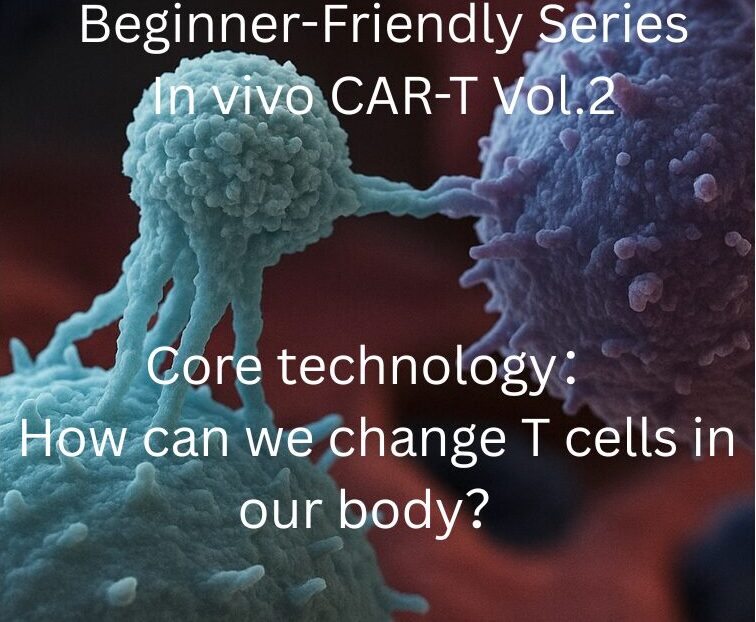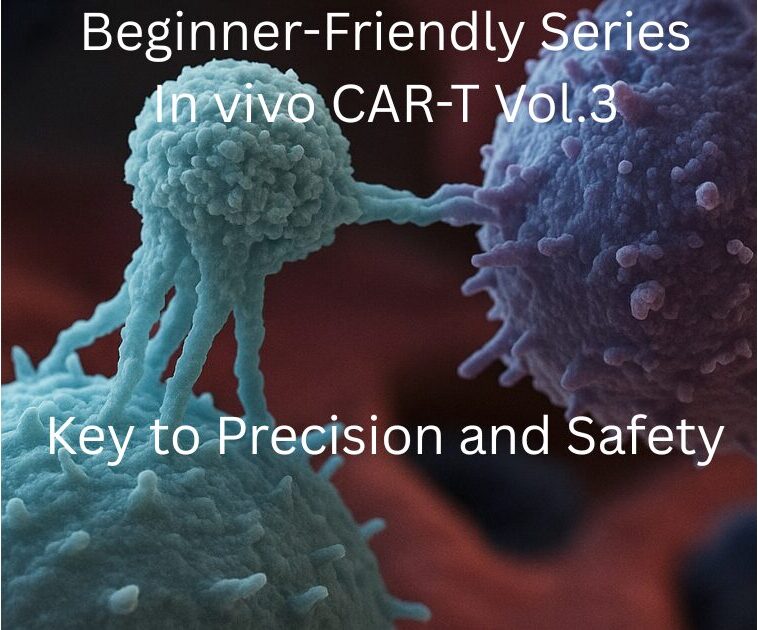In this third installment of our introductory series on in vivo CAR-T, we focus on a vital component for realizing safe and effective therapy: the design of CAR expression. We explore how “smart control” of CAR expression—targeting tumor tissue, regulating timing, and controlling levels—is becoming central to development. The goal is to provide accessible explanations for beginners, shedding light on where the next breakthroughs will arise.
Table of Contents
- 1. Why CAR Expression Control Matters
- 2. Strategies for Smart CAR Expression
- 3. Emerging Tools and Technologies
- 4. Future Outlook
- 5. What’s Coming Next
1. Why CAR Expression Control Matters
In traditional CAR-T therapies, once CAR genes are introduced into T cells, the expression is typically continuous. However, for in vivo CAR-T—where genetic material is directly introduced into cells within the body—uncontrolled CAR expression can lead to off-target toxicity or damage to normal tissues. This makes it essential to control “where,” “when,” and “how much” CARs are expressed. Especially in in vivo systems, this control determines both efficacy and safety.
2. Strategies for Smart CAR Expression
Several innovative strategies are being employed in current research and development:
- Tumor-Specific Promoters: Promoters that are active only in tumor tissue (e.g., hTERT, survivin, mesothelin promoters) are used to restrict CAR expression to cancer cells.
- AND Gate Control: CARs are expressed only when two conditions are met—for instance, the presence of both tissue-specific transcription factors and inflammation-specific factors.
- Drug-Inducible Systems: Expression of CARs is controlled externally using drugs (such as doxycycline or rapamycin) that can switch gene expression on or off.
3. Emerging Tools and Technologies
To implement these expression controls, several delivery and regulation tools are being developed:
- mRNA Delivery: mRNA is naturally transient and allows for temporary CAR expression. Nanoparticle carriers are often used to deliver it to the target tissue.
- Self-Limiting Vectors: Systems using non-integrating vectors or suicide switches (e.g., inducible caspase 9) to prevent prolonged expression.
- CRISPRa / CRISPRi: Utilizing genome-editing technology to activate or suppress specific gene expressions under precise control.
Each of these approaches aims to achieve tight regulation of expression, improving both safety and efficacy.
4. Future Outlook
Smart CAR expression systems hold promise not only for blood cancers but also for treating solid tumors and autoimmune diseases. By combining tumor specificity, external controllability, and temporary expression, they allow in vivo CAR-T to be tailored to individual patients. Clinical trials using these technologies are already underway in the U.S., Europe, and China, and next-generation products are in the pipeline.
5. What’s Coming Next
In the next article, we’ll take a closer look at “delivery systems”—how in vivo CAR-T payloads are transported into the body. We’ll explore the latest innovations in lipid nanoparticles (LNPs), viral vectors, and targeting technologies.
🔗 Related Articles
- 2025 Therapeutics Trend
- [Series #1] Emily’s Miracle: How CAR-T Therapy Began
- [Series #2] mRNA and Vector Design: How to Deliver the CAR Instructions
- Introductory Series: Full Archive



This article was produced by the editorial team at Morningglorysciences.









Comments